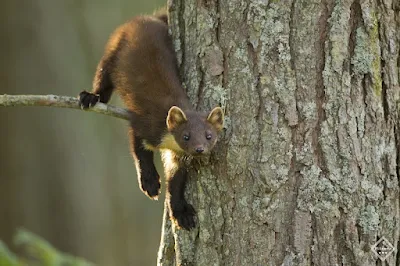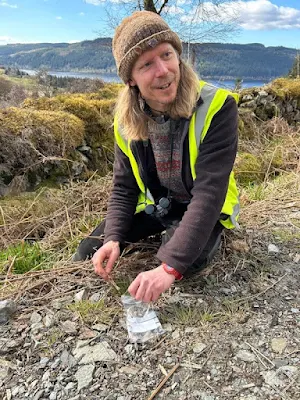Conservation organisations win support from The National Lottery Heritage Fund for woodland restoration and bringing back a lost member of our woodland communities
A partnership of leading conservation organisations has received a National Lottery Heritage Fund grant of £1.2million which will allow it to boost the recovery of the South West's woodlands through the reintroduction of a lost native animal: the pine marten.
Pine Martens Bounce Back: The Two Moors Pine Marten Project is centred on Dartmoor and Exmoor. Made possible by money raised by National Lottery players, the project focuses on the reintroduction of pine martens to the region after an absence of 150 years. Alongside the animal's return will be an ambitious programme of community activities which will engage thousands of people in exploring, learning about and caring for the region's woodlands.
The project is being led by the charity Devon Wildlife Trust and is a partnership between seven conservation organisations: Dartmoor National Park Authority, Devon Wildlife Trust, Exmoor National Park Authority, Forestry England, National Trust, Somerset Wildlife Trust and Woodland Trust.
Around 40 pine martens will be released over the next two years at carefully selected locations on Dartmoor and Exmoor. The timings of the releases are yet to be disclosed. The new pine martens are being sourced under license from existing healthy populations in Scotland.
The animal's return will signal the start of an ambitious community engagement project. Over three years, thousands of people will support the return of this missing piece of our woodland community and help restore the region's woodlands. Hundreds of opportunities will be made available to people from across the South West drawn from diverse backgrounds. Just some of these opportunities will include:Woodland and hedgerow creation and restoration activities
- Chances for people of all ages and experience to become citizen scientists and nature spotters – monitoring pine marten behaviour and other woodland wildlife
- Woodland-themed, nature-based activities and events in communities local to pine marten release sites
- Small grants for community-based projects that will help nurture local woodland wildlife
- A free digital download pack focussed on pine martens and woodlands, containing wildlife spotter sheets, self-guided discovery trails and craft activities
The project also has a strong focus on creating pathways for young people to get involved in conservation through volunteering and traineeships.
Ed Parr Ferris is Devon Wildlife Trust's Conservation Manager. Ed said:
"We are thrilled to have received this support thanks to National Lottery players. The return of pine martens to the South West of England is an exciting development and follows other successful reintroductions of the animal in the Forest of Dean and Wales.
Like the rest of our countryside, our region's woodlands have seen a recent decline in the community of wildlife they support. This makes the prospect of bringing back an animal which was once a common part of that community so exciting.
This project will ensure that people from lots of different backgrounds are able to play a part in the return of pine martens and to celebrate our region's wonderful woodlands."
Alex Raeder is South West Landscapes Partnerships Manager at the National Trust. Alex said:
"The National Trust is delighted to be a partner in this project that will bring back a beautiful and charismatic animal to the woodlands of the South West, lost from our landscape since the nineteenth century. We hope this will inspire a wide range of people in nature restoration and we will be creating lots of opportunities for participation in projects like citizen science as part of our strategy for a restored and nature rich countryside in the South West of England."
Eleanor Lewis. Woodland Trust's Outreach Manager South West said:
"The feasibility study as part of the [The Two Moors Pine Marten Project] development phase work, has given us the confidence that woodlands across the Two Moors are suitable for these releases. From the Woodland Trust's State of Woods and Trees report we know that our woods need to be in better condition to allow the ecosystem to function at its best. Introducing pine martens will support that, they are a missing piece in the woodland food chain, but we also look forward to working with the project advisers, who will be liaising with landowners, to explore way that woodlands and hedges within the Two Moors are managed to encourage the conditions to support our wildlife including the pine marten."
Stuart McLeod, Director, London & South, The National Lottery Heritage Fund, said:
"We are delighted to be supporting a project which will not only see the reintroduction of pine martens to the South West but inspire local communities to enjoy and care for their woodlands. This is an important initiative that fits with our ambition to help habitats and species thrive, reducing and mitigating the impacts of climate change, while helping people connect to our unique natural heritage."
Pine Marten. Photo credit Mark Hamblin
.
Two Moors Pine Marten Project Officer, Daniel Brown, surveys for signs of pine martens on a recent research trip to Scotland
-------------





